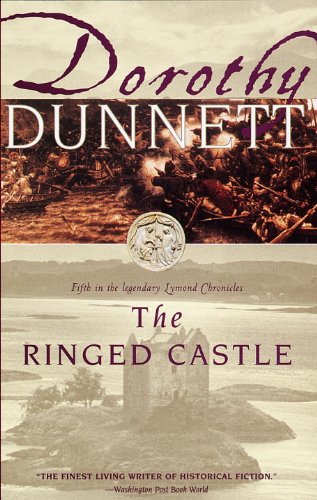I thought I’d link to some old posts about books set in Scotland and plan to read a few new ones in honor of Robert Burns Day, b. January 25, 1759.

- Wee Gillis by Munro Leaf.
- Always Room for One More by Sorche Nic Leodhas
- Across a Dark and Wild Sea by Don Brown. A picture book biography of St. Columba (Columcille), an Irish missionary to the Scottish island of Iona.
- Parsifal Rides the Time Wave by Nell Chenault. Time travel to twelfth century Scotland.
- How the Scots Invented the Modern World: The True Story of How Western Europe’s Poorest Nation Created Our World & Everything in It by Arthur Herman.
- The Highland Falcon Thief by Sam Sedgman.
- Time Sight by Lynne Jonell. More time travel in Scotland.
- The Hill of the Red Fox by Allan Campbell McLean.
- The Hornet’s Nest by Sally Watson.
- Greyfriars Bobby by Eleanor Atkinson.
- Game of Kings by Dorothy Dunnett.
- Queen’s Play by Dorothy Dunnett.
- The Disorderly Knights by Dorothy Dunnett.
- Pawn in Frankincense by Dorothy Dunnett.
- The Ringed Castle, Book Five in the Lymond Chronicles by Dorothy Dunnett.
- Checkmate, Book Six in the Lymond Chronicles by Dorothy Dunnett.
- Malcolm, or The Fisherman’s Lady by George MacDonald.
- The Marquis’ Secret by George Macdonald.
- Remembrance by Theresa Breslin.
- The Anatomist’s Wife by Anna Lee Huber.
- Rescuing Seneca Crane by Susan Runholt.
- The Island of Mad Scientists by Howard Whitehouse.
- Hamish McBeth mysteries by M.C. Beaton.
- The Sunday Philosophy Club by Alexander McCall Smith.
- Caledonia, Legend of the Celtic Stone: An Epic Saga of Scotland and her People by Michael Phillips
- 44 Scotland Street series by Alexander McCall Smith

- I’d like to read some of the books from this list:
- Scottish Chiefs by Jane Porter.
- The Master of Ballantrae by Robert Louis Stevenson. Set in Scotland during the Jacobite Revolution of 1745 and its aftermath.
- Mrs. Tim Gets a Job by D.E. Stevenson.
- The Fields of Bannockburn by Donna Fletcher Crow.
- Martin Farrell by Janni Howker.
- Waverley by Sir Walter Scott. A young English dreamer and soldier, Edward Waverley, is sent to Scotland in 1745, into the heart of the Jacobite uprising.
- Rob Roy by Sir Walter Scott. I read about half of this one, but found it hard going.
- Valiant Minstrel: The Story of Harry Lauder by Gladys Malvern. Sir Harry Lauder was a vaudeville singer and comedian from Scotland.
- Sir Gibbie by George MacDonald.
- Highland Rebel by Sally Watson.
- The King’s Swift Rider by Mollie Hunter.
- Scottish Seas by Douglas M. Jones III.
- The Flowers of the Field by Elizabeth Byrd.
- In Freedom’s Cause: A Story of Wallace and Bruce by GA Henty.
- Meggy MacIntosh: A Highland Girl in the Carolina Colony by Elizabeth Gray Vining.
- Mary Queen of Scots and The Murder of Lord Darnley by Alison Weir.
Then, here are some Scottish flavored books I’ve read but not reviewed here at Semicolon. I remember all of these as books I would recommend:
Immortal Queen by Elizabeth Byrd. Historical romance about Mary, Queen of Scots.

The Iron Lance by Stephen Lawhead.
The 39 Steps by John Buchan.
Beside the Bonnie Brier Bush by Ian MacLaren.. A collection of stories of church life in a glen called Drumtochty in Scotland in the 1800’s. Recommended.
The Little Minister by J.M. Barrie. I get this one mixed up in my head with The Bonnie Brier Bush because both are set in rural Scotland among church people, and both are good. Also recommended.
The Princess and the Goblin by George MacDonald.
The Princess and Curdie by George MacDonald.
The Queen’s Own Fool by Jane Yolen. Mary, Queen of Scots again.
Recommended by other friends and bloggers:
The Tartan Pimpernel by Donald Caskie. Reviewed by Barbara at Stray Thoughts.
Robert Burns’ poetry, highlighted at Stray Thoughts.
Thistle and Thyme by Sorche Nic Leodhas. I actually have this collection of Scottish folktales in my library.
Heather and Broom by Sorche Nic Leodhas.
Claymore and Kilt : Tales of Scottish Kings and Castles by Sorche Nic Leodhas.
The Scotswoman by Inglis Fletcher.
Guns in the Heather by Lockhart Amerman.
The Gardener’s Grandchildren by Barbara Willard.
Duncan’s War (Crown and Covenant #1) by Douglas Bond.
Outlaws of Ravenhurst by M. Imelda Wallace.
Quest for a Maid by Frances May Hendry.
Little House in the Highlands by Melissa Wiley.
Bonnie Dundee by Rosemary Sutcliff. “The beginnings of the Jacobite rebellion when King James fled to Holland.”
The Stronghold by Mollie Hunter.
The Lothian Run by Mollie Hunter.
The Three Hostages by John Buchan. Recommended by Carol at Journey and Destination.
Scotland’s Story by H.E. Marshall.
Movies set in Scotland:
Brigadooon. I like this one partly because of Gene Kelly, partly because it takes place in Scotland, and partly because Eldest Daughter was in a local production of Brigadoon several years ago.
Stone of Destiny. Recommended by HG at The Common Room. I enjoyed this movie based on a true incident in 1950 when four Scots student stole the Stone of Scone from Westminster Abbey and returned it to Scotland from whence it came back in the thirteenth century.
Braveheart. William Wallace and all that jazz.
Scots poetry:
Young Lochinvar by Sir Walter Scott.
From Marmion by Sir Walter Scott.
My Luve’s Like a Red, Red Rose by Robert Burns.
In the Prospect of Death by Robert Burns.
Lament for Culloden by Robert Burns.
Beneath the Cross of Jesus by Elizabeth Clephane.
O Love That Wilt Not Let Me Go by George Matheson.










